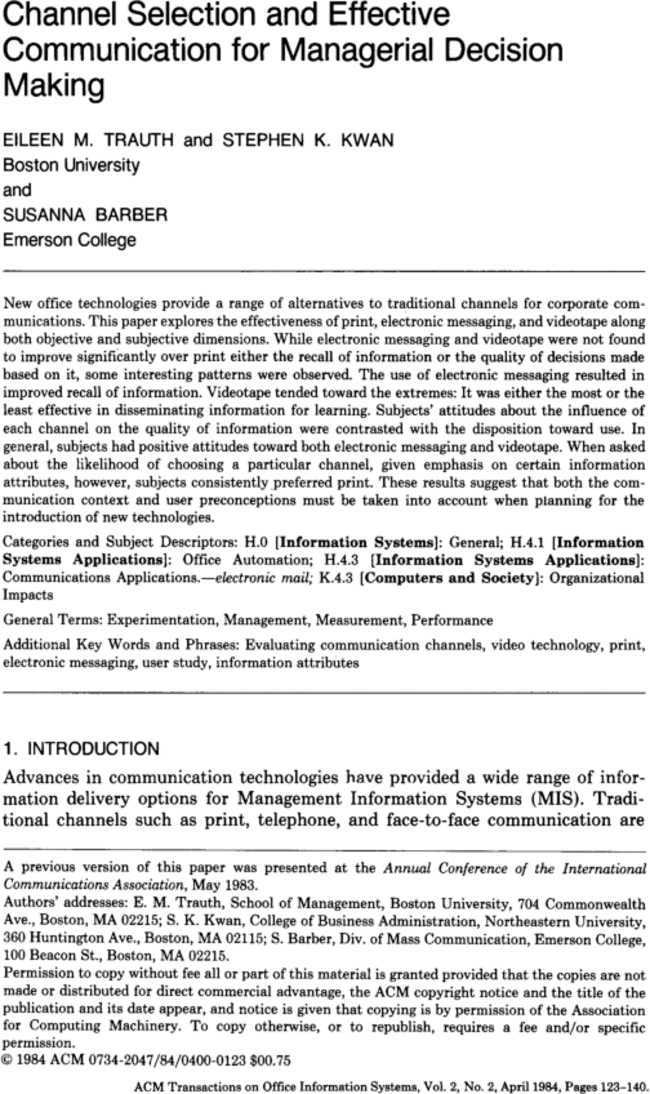Cited By
View all- Woodward IVongswasdi P(2017)More that unites than divides: intergenerational communication preferences in the workplaceCommunication Research and Practice10.1080/22041451.2017.12752593:4(358-385)Online publication date: 14-Feb-2017
- Grantham CVaske J(2007)Predicting the usage of an advanced communication technologyBehaviour & Information Technology10.1080/014492985089018114:4(327-335)Online publication date: 31-Jan-2007
- J. Ang F. Pavri (1994)A survey and critique of the impacts of information technologyInternational Journal of Information Management: The Journal for Information Professionals10.1016/0268-4012(94)90031-014:2(122-133)Online publication date: 1-Apr-1994
- Show More Cited By




